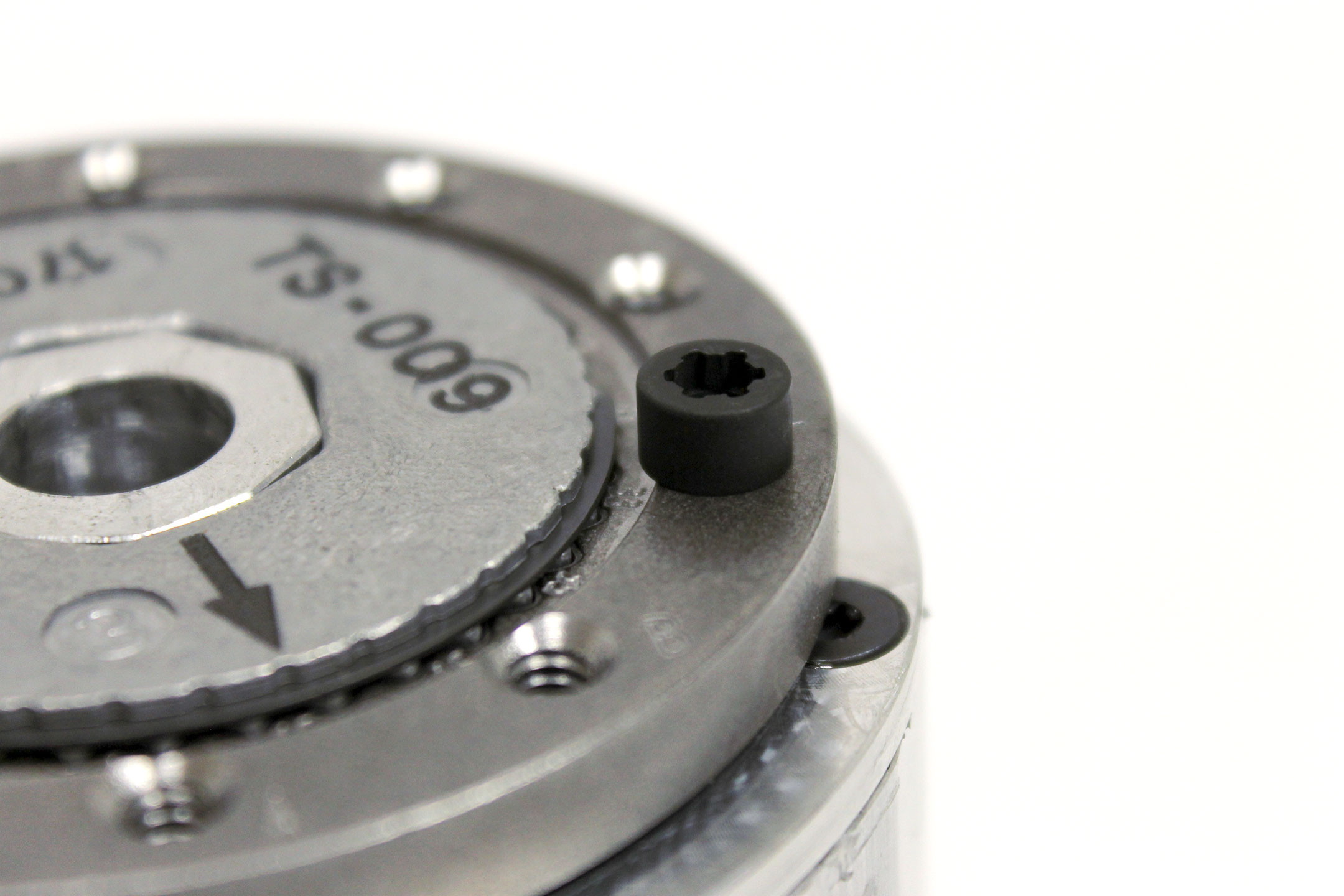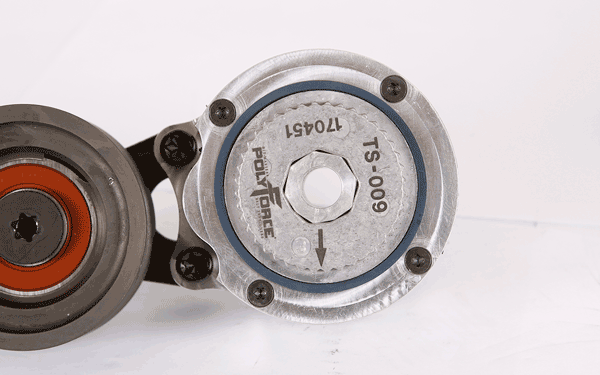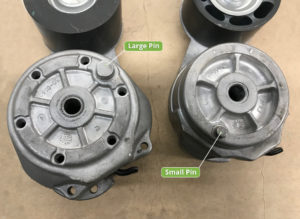
TECH TIPS – Belt Tensioner Pins
A common question regarding belt tensioners is, “What is the pin for?” Each belt tensioner has a pin sticking out of the front of the housing. These pins vary in size, location, and even quantity.
The purpose of these pins is to assure that the tensioner is installed on the vehicle in the exact position that it is intended, and that it stays there. When installing a tensioner on a vehicle, there will be a port for this pin to fit into. When installed properly, the tensioner will apply the proper amount of tension to the belt. Without the pin, the tensioner would simply spin around the mounting bolt and wouldn’t apply pressure to the belt. If a pin was in the wrong location on the tensioner, the tensioner would either apply too much or too little pressure to the belt.
On most OEM belt tensioners, the pin is built into the cast aluminum housing. While this pretty much eliminates any chance of improperly installing the tensioner on the vehicle, it also means that any tensioner with a different pin location requires a completely different housing. PolyForce Belt Tensioners handle pins a bit differently. Instead of being part of the housing, the pins work in conjunction with a “locating ring.” The pin is installed on the locating ring in one of the ring’s nine threaded holes. The locating ring itself can be mounted to the tensioner housing in one of 39 positions. This allows PolyForce Belt Tensioners to achieve any pin position within a 360 degree circle.

When assembling a PolyForce Belt Tensioner, you will notice that you must choose between the small and large pin. OEM pins come in one of two sizes (pin diameters). PolyForce pins simply match the OEM pins.

Most OEM belt tensioners have one of two pin sizes.
The pins on belt tensioners need to withstand quite a bit of shearing force when the tensioner flexes. We have found that PolyForce pins, which are made of alloy steel, are far stronger than OEM pins, which are aluminum.
Occasionally, there is a belt tensioner that has two locating pins. This is to prevent the pins from shearing off in high tension applications. When replacing these tensioners with a PolyForce Belt Tensioner, only one pin is required, due to the high strength steel used in our pins. The PolyForce cross-reference guide or website will indicate which pin to use and which location to install it in.



